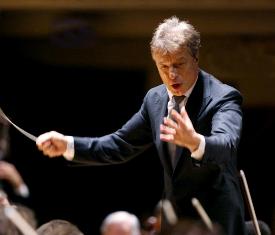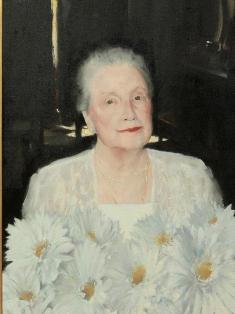
Abbado Impresses in Return Visit

Roberto Abbado (photo courtesy of the CSO)
|
Overtures usually open concerts, not close them.
Tell that to guest conductor Roberto Abbado, who ended his Cincinnati Symphony Orchestra concert with an overture Monday night (Nov. 21) at Music Hall.
It wasn't just any overture, but Rossini’s “William Tell”
Overture, universally known for its closing bars as the theme from “The Lone
Ranger” on TV and radio. And nothing could have been better.
Abbado, 56, made his CSO debut last spring in a diverse and stimulating program (Roussel, Stravinsky, Mussorgsky) that won him high compliments. Monday’s appearance cemented that impression. It was a special CSO “community Thanksgiving” with a “pay what you wish” admission fee that attracted many listeners. Proceeds benefitted the musicians’ pension fund.
Also on the program were Robert Schumann’s Symphony No. 4, Mozart’s Ave verum corpus with the May Festival Chorus and his Sinfonia Concertante in E-flat Major for Violin and Viola, featuring CSO concertmaster Timothy Lees and principal violist Christian Colberg.

Louise Dieterle Nippert
|
Abbado opened with Mozart’s sublime motet, which he kept wonderfully soft throughout (as Mozart intended). It made not only a lovely opening to the concert but introduced a tribute to Louise Dieterle Nippert, whose philanthropy has meant so much to the orchestra (including the just ratified players contract, which a gift from Mrs. Nippert helped facilitate). CSO violinist Stacey Woolley, chairman of the CSO Players Committee, presented her with an honorary membership in the Cincinnati Musicians Association (Local No. 1 of the American Federation of Musicians), as well as a newly commissioned portrait by Jon Muth, to hang eventually in Music Hall. The crowd honored her with a heartfelt and richly deserved standing ovation.
Lees and Colberg were a joy to hear in the Sinfonia Concertante (which gets fewer readings than it should for such a masterwork). It was an extremely musical performance, aided by Colberg’s placement on the outside, where his darker sound could project more easily. The two complemented each other beautifully, from the noble Allegro to the nimble finale. The ravishing Andante was touched by sadness and deep introspection.
Abbado’s Schumann was marked by precision and a feeling of everything in place. Abbado (currently artistic partner at the St. Paul Chamber Orchestra and a busy opera conductor) led vigorously, with large, strong gestures. He knit the Fourth Symphony, which is written without a break, into a meaningful whole. The Romanze was lovely, the Scherzo assertive, with a gently flowing trio (mid-section). The transition to the climactic finale was ever so soft.
The “William Tell” Overture means cellos. Really four movements in one, it begins with a Prelude featuring five solo cellos. It was a gorgeous moment, principal cellist Ilya Finkelshteyn (whose warm, elegant playing consistently inspires) soaring up to a high E at the end. It also means trombones, who punched out their lines like rapiers in the storm scene, and English horn and flute, i.e. English hornist Christopher Philpotts and principal flutist Randolph Bowman, who were never more charming than in the Pastorale. The famous trumpet call introducing the finale seemed to say this is the way to end a concert.
The CSO players awarded Abbado a rare solo bow, an indication of their respect and admiration (and a bigger shot, perhaps, at the CSO’s vacant music director post).